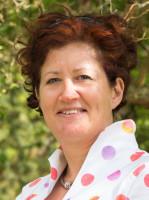
Professor of Biological and Biomedical Chemistry
What we do...
Our research focusses on the molecular structure of biological tissues. The bulk of structural tissues such as bone, muscle, tendon and skin, is the so-called extracellular matrix. This extracellular material gives the tissue its essential mechanical properties, for instance the stiffness and toughness of bone, the elasticity of skin. The molecular structure of the extracellular matrix is complex and subject to equally complex chemistry on a daily basis. This leads to structural changes, which in ageing, in diseases such as cancer and degenerative diseases like osteoarthritis can be substantial. Cells take their cues from the molecular structure of the extracellular matrix that surrounds them, and so their behaviour changes when the extracellular matrix structure changes. This results in aberrant cell behaviour in cancer for instance, and imperfect tissue repair after damage in ageing.
The major paradigm in our research is that normal cell behaviour can be restored by restoring normal extracellular matrix structure. Our work aims to generate the understanding needed to drive development of new therapeutics for degenerative diseases.
You can read more about our research here.
We are funded by...
The European Research Council, the Medcical Research Council, the British Heart Foundation, Cycle Pharmaceuticals and Cambridge Oncology.
Watch Professor Melinda Duer discuss her research
Take a two-minute tour of the Duer Lab
Publications
- <
- 3 of 17
